Before and after pictures show scale of devastation after Turkey earthquake
A series of earthquakes and aftershocks striking the border region between southeast Turkey and northwest Syria on Monday is feared to have killed 20,000 people.
The 7.8 magnitude earthquake became the deadliest in more than a decade on Wednesday after the number of people killed passed 9,000.
More than 30,000 people have been hurt and authorities expect the death toll to continue to climb as rescue workers race to pull survivors from the rubble in cities and towns across a wide area.
The tremors were centred in Kahramanmaras province, near the major Turkish cities of Gaziantep and Adana.
Powerful aftershocks continued to hit as far away as northern Iraq into the early afternoon on Monday, with another major tremor reaching magnitudes exceeding 7 recorded in central Turkey.
It was the deadliest earthquake to hit Turkey since 1999. The devastation is immense, while the search for survivors has been impeded by sub-zero temperatures, decimated buildings and unstable structures.
Before and after pictures reflect the true scale of the devastation.
The Grand Mosque in Malatya, Turkey is among the buildings damaged.
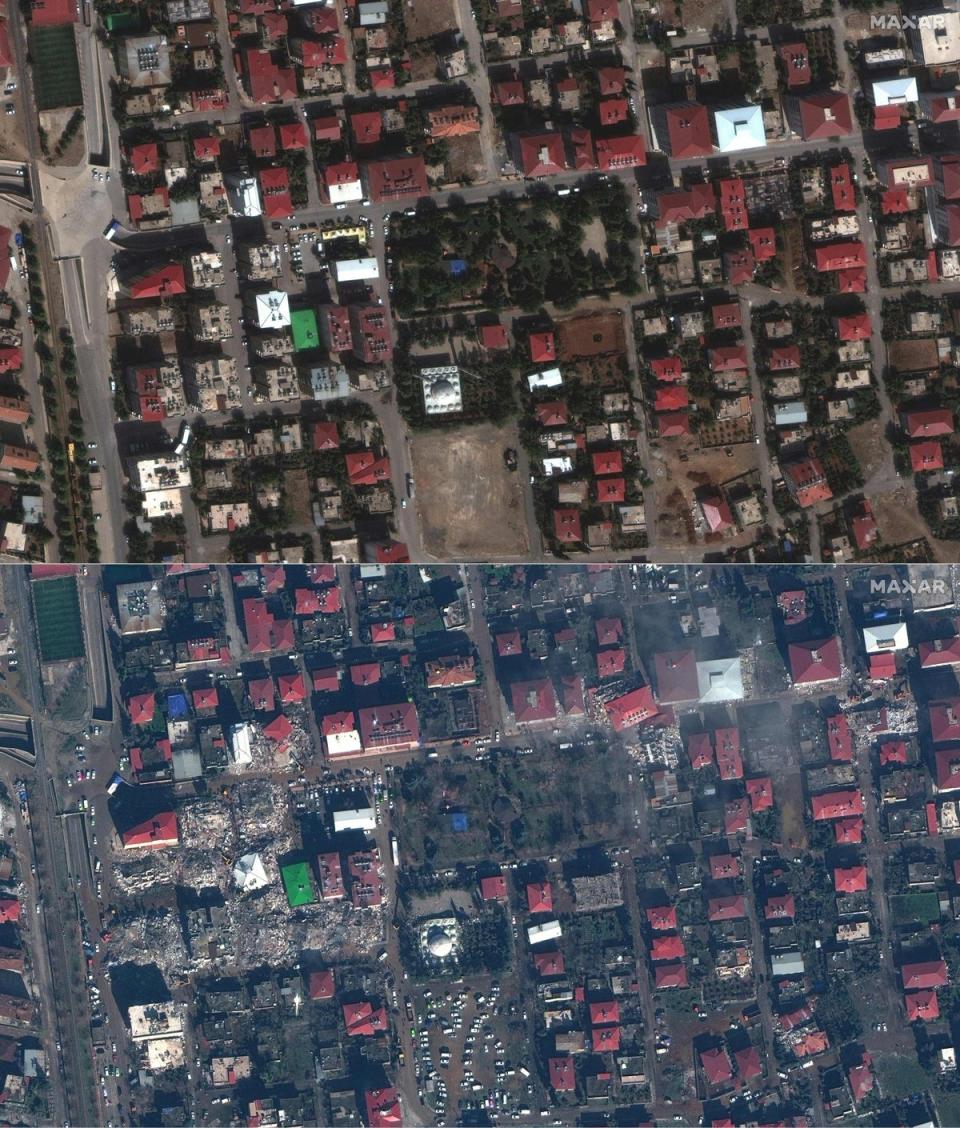
A historic place of worship, the inscriptive plaque inside dates back to 1247, during the rule of Seljuk Sultan Izz al-Din Kaykawus II.
However, construction may have begun even earlier. The mosque was repaired and extended under Mamluk rule in the second half of the fourteenth century and was later restored by the Ottomans in 1649 and in 1903.

Elsewhere, a 2,000-year-old castle has been destroyed. Topping the mound in the centre of Gaziantep, Turkey, the area was first used as an observation point during the Hittite Empire.
The castle was later built during the Roman Empire, in the 2nd and 3rd centuries. It was then extended by the Byzantine emperor Justinian I in the 6th Century, undergoing further changes during the reign of the Ayyubids in the 12th and 13th Centuries alongside the Ottoman Empire.
Turkish state-run news agency Anadolu reported that “debris was scattered on the road” nearby, with some of the fortifications in the east, south and south-east destroyed.
Until recently, the castle operated as the Gaziantep Defence and Heroism Panoramic Museum.
Authorities have confirmed that more than 3,400 people have died across 10 Turkish provinces, with Hatay forming Turkey’s worst-hit region. More than 20,000 have been injured, with authorities reporting deaths as far south as Hama, around 100km from the epicentre.
The Hatay Province is the southernmost province in Turkey, bordering Syria to the south and east. It has been settled on since the early Bronze Age and was one part of the Akkadian Empire, the Amorite Kingdom of Yamhad and the Kingdom of Mitanni.
The province hosts an array of famous archaeological sites, including Alalakh, Tell Tayinat, Tell Judaidah, and Antioch.
Operations have been halted at Iskenderun Port as hundreds of shipping containers became engulfed by fire on Tuesday.
Water jets from a fire engine set upon the blaze as thick smoke billowed into the sky, with leading global container shipping group AP Moller Maersk reporting significant damage to logistics and transport infrastructure.
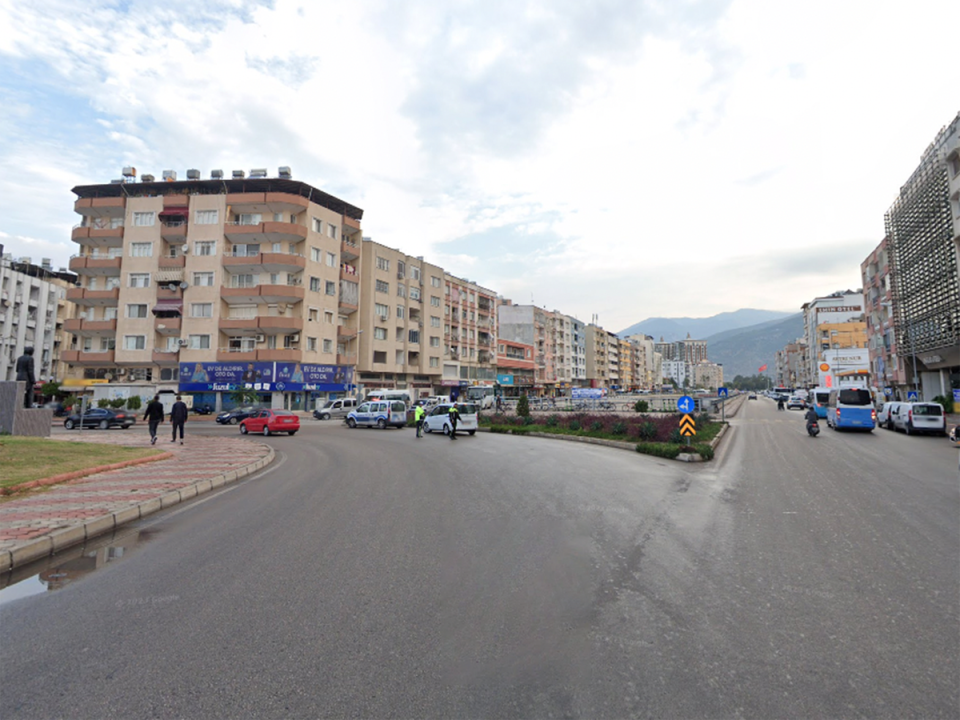
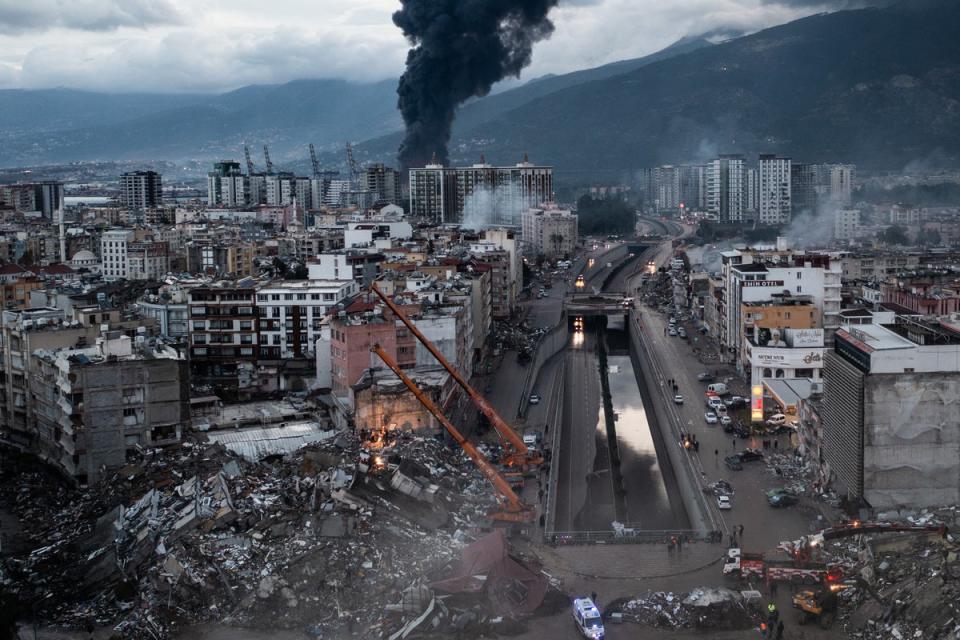
Freight liners have diverted ships to other ports, including the Port of Mersin in Turkey and Port Said in Egypt.
On Tuesday afternoon, Turkish officials confirmed that more than 8,000 people had been pulled from the rubble, with dozens of countries deploying teams to assist across both countries.

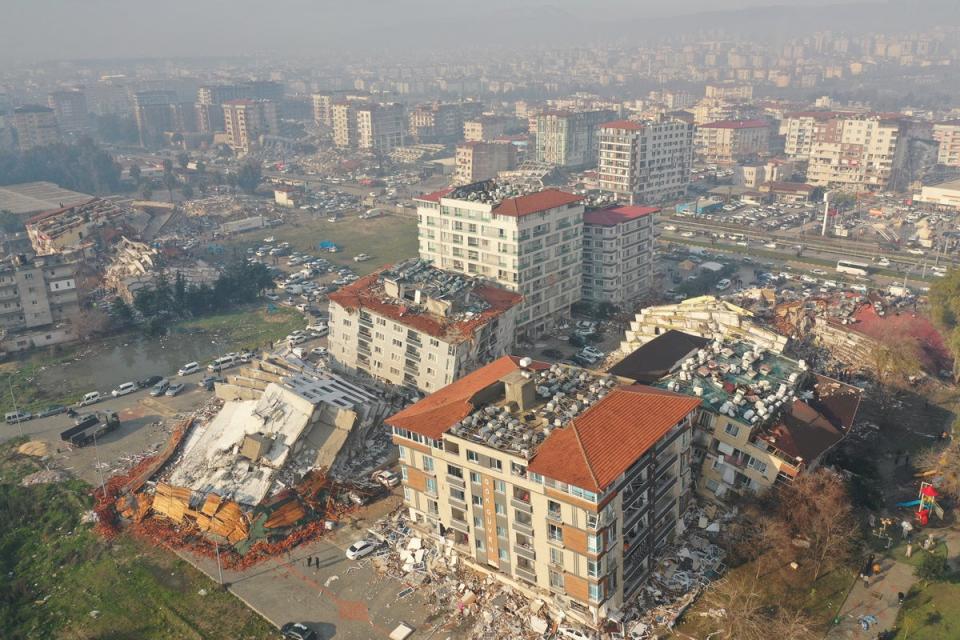
Many areas have been left without rescue help, with residents forced to attempt to recover their relatives from the depleted buildings.
Those trapped have been calling out and sending messages via phone to aid their rescuers in locating them.
Much of the port city of Iskenderun, in Turkey’s southern Hatay province, lies in ruins, with more than 1,200 buildings destroyed.
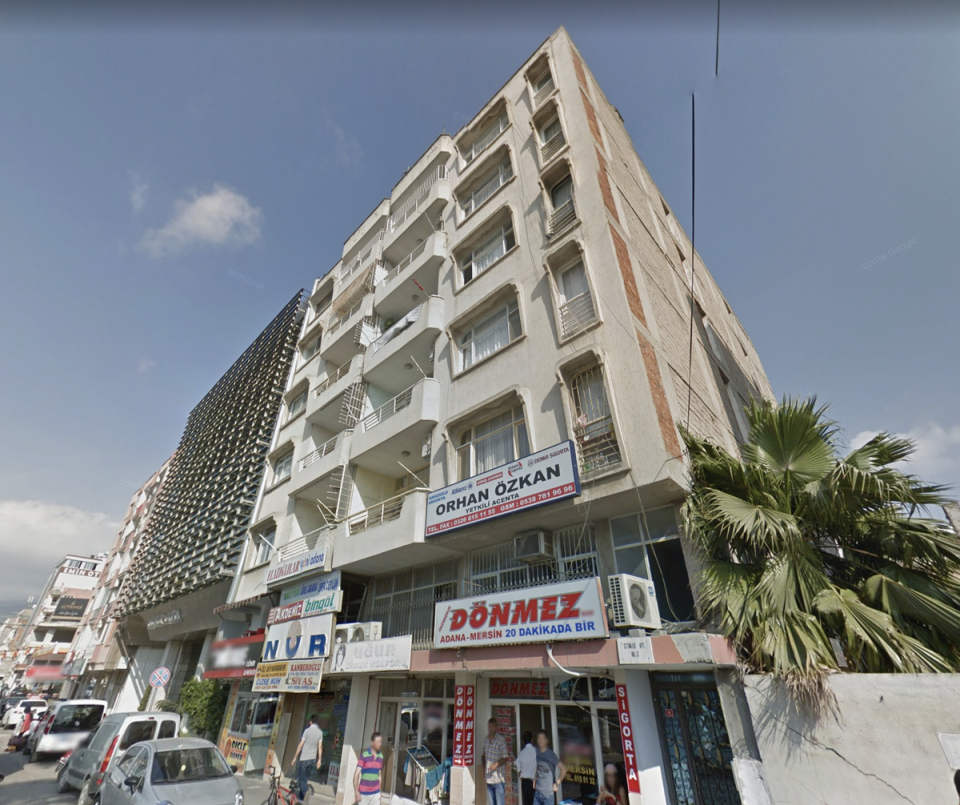
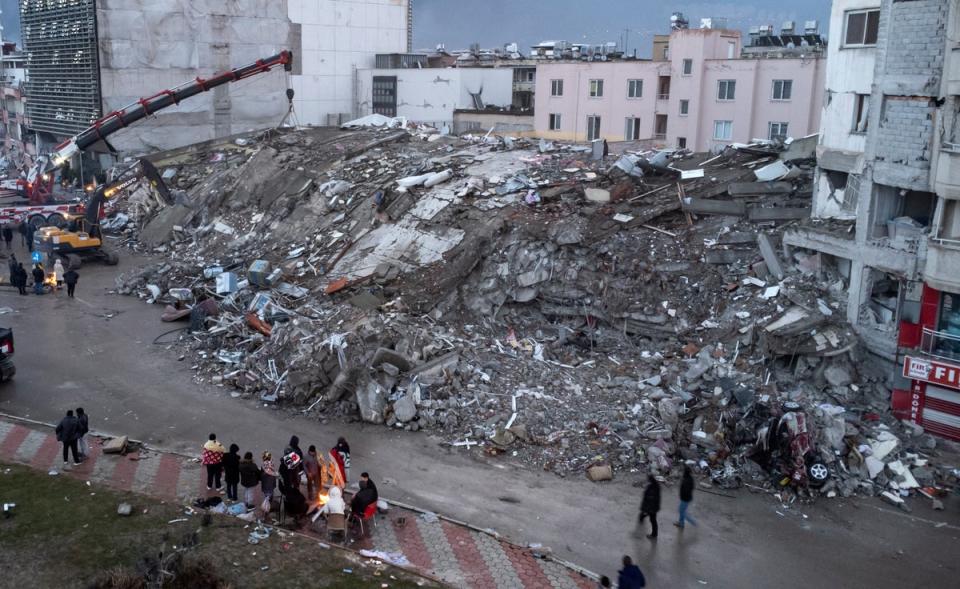
One doctor has reported that bodies are “everywhere” in a collapsed hospital.
“I’m devastated. I see bodies inside, everywhere. Although I’m used to seeing bodies because of my expertise, it’s very difficult for me,” the doctor - who identified himself as Dr Deveci to Reuters - expressed.
As officials fear that the death toll will keep rising, the World Health Organisation (WHO) is concerned that it has not yet had information from a number of areas. It believes that the death toll could potentially reach 20,000.


